In a nutshell: Yes, QR Codes can be tracked, but only if they’re dynamic QR Codes. With tracking, you can monitor scan data like location, time, device, and more. This guide explains how QR Code tracking works, what data you can collect, and why businesses are using trackable QR Codes to optimize campaigns. Learn the tools, use cases, and step-by-step process to start tracking scans effectively.
QR Codes have become a common sight. You must have seen them on restaurant menus, product packaging, ads, posters, flyers, and even store receipts.
With over 26 million scans happening daily, they’re clearly a powerful tool. But here’s what many do not realize: not every QR Code can be tracked, and that makes all the difference.
Did you know that, according to Scanova’s internal data, nearly 98% of all QR Codes created are dynamic ones? This highlights the growing trend towards flexibility and real-time tracking.
These seemingly simple QR Codes hold a secret power, the ability to track every scan, revealing not just where people are scanning from, but also what piques their curiosity.
With this guide, we’ll dive deeper and discover the truth behind the question: Can QR Codes be tracked, and if so, which ones can?
You will also learn what else these trackable dynamic QR Codes can do and what secrets they hold.
Let’s begin!
A. What is QR Code tracking?

QR Code tracking is the process of collecting and analyzing data when someone scans a QR Code. It tells you when, where, and how often your QR Code is being scanned and even what device was used.
Why does that matter? Because these insights help you understand your audience better.
Businesses and marketers use this data to measure what’s working for them and what’s not. They can then fine-tune their campaigns accordingly and boost engagement.
This data can help you gain valuable insights into user behavior, campaign effectiveness, and overall engagement using advanced analytics that record various metrics each time a QR Code is scanned.
B. How does dynamic QR Code tracking work?
QR Code tracking works through a combination of unique URLs and analytics software. Let’s understand them in detail.
The ability to track QR Code scans depends on the type of code generated. Online QR Code generators offer two main options: static QR Codes and dynamic QR Codes.
Static vs. Dynamic QR Codes: What’s the difference (and why it matters for tracking)?
There are two main types of QR Codes: static and dynamic. Both can be scanned with a smartphone to reveal information, but they differ in their tracking abilities and how easily you can change the information they contain.
At first glance, they both do the same thing: they can be scanned by a smartphone to show a link, message, or any digital content.
But when it comes to tracking QR Codes and keeping your campaigns flexible, the difference between them is huge.
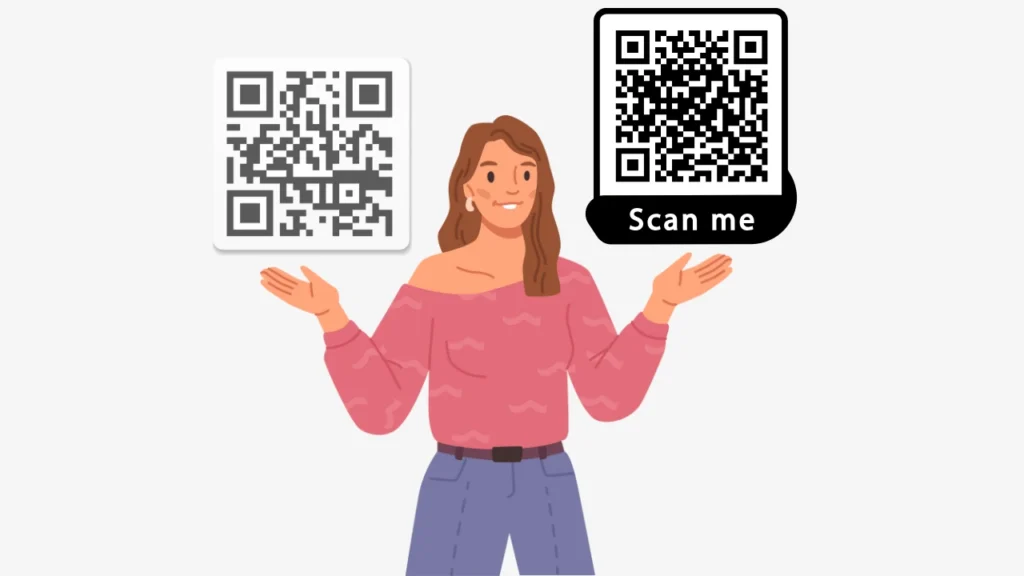
1. Static QR Codes: Simple, but limited
Static QR Codes are basic and straightforward. Whatever data you add, like a URL, text, or contact info, is permanently embedded in the code.
Once it’s created, that’s it. You can’t change the content later.
They’re great for simple use cases, like one-time promotions or personal links. But there are some major limitations:
❌ No tracking: You won’t know how many times the code was scanned, when, or where. There’s no data, so you’re basically flying blind.
❌ No editing: If you make a typo or want to update the link, you’ll need to create and reprint a brand new QR Code.
In short, static QR Codes are easy to use, but they don’t offer any insights or flexibility.
2. Dynamic QR Codes: Trackable and editable
Dynamic QR Codes, on the other hand, are a game-changer for anyone who wants to get real value out of their QR Code campaigns.
With dynamic QR Codes, the content isn’t stored directly in the code. Instead, the code points to a short URL that you can update anytime. That means:
✅ You can change the destination URL after printing the code. So there’s no need to reprint flyers or packaging ever again.
✅ You can track scans and see how many people scanned it, when, where, and on what device.
Let’s say you print a dynamic QR Code on a restaurant menu linking to your special offers page. Later, you decide to change the page or update the offer.
With dynamic QRs, you won’t face any problem. You can simply edit the link in your dashboard. The QR Code itself stays the same.
This makes dynamic QR Codes perfect for tracking, marketing, promotions, business cards, or anything where flexibility and performance insights matter.
C. Why are Dynamic QR Codes better for data-driven decisions?
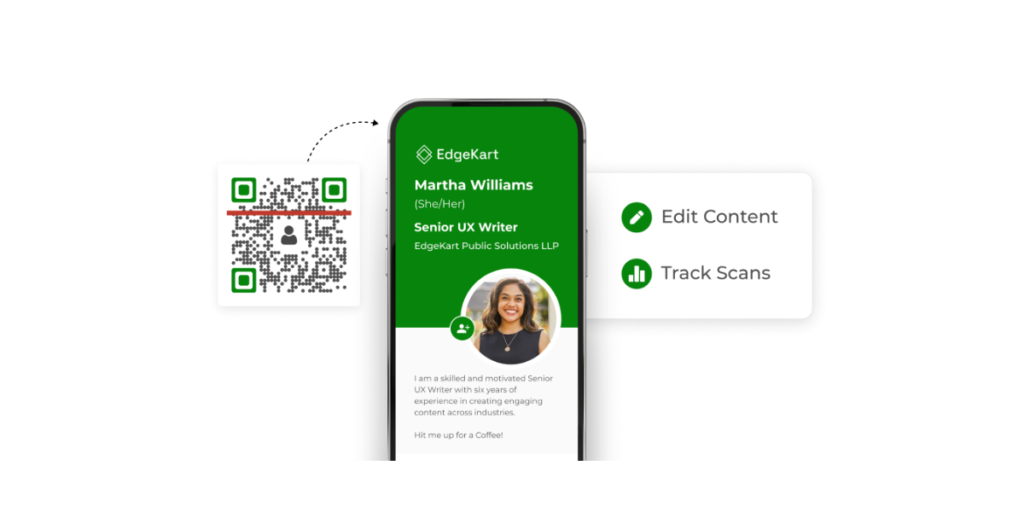
Here’s what dynamic QR Codes offer that static ones don’t:
Tracking analytics – You get detailed scan data like location, time, number of scans, and even the device type. This way, you can tap into user behaviour and see what works.
Editable content – You can fix typos, update URLs, or change content without touching the printed QR Code anytime. That saves a lot of time and effort, and money (on printing and reprinting).
Campaign flexibility – You can run A/B tests, rotate destinations, and improve engagement based on real-time performance.
If you’re not familiar with A/B testing, here’s a quick explanation:
A/B testing is when you compare two versions of something, like a landing page or a QR Code destination link, to see which one performs better.
For example, you might direct 50% of users to one page (Version A) and the other 50% to a slightly different version (Version B).
By tracking the results (like how many people clicked a button or made a purchase), you can figure out what’s working and what’s not.
And with dynamic QR Codes, this becomes easy because you can update where your code points and rotate URLs, that too, without reprinting anything.
D. What data can you track with a QR Code?
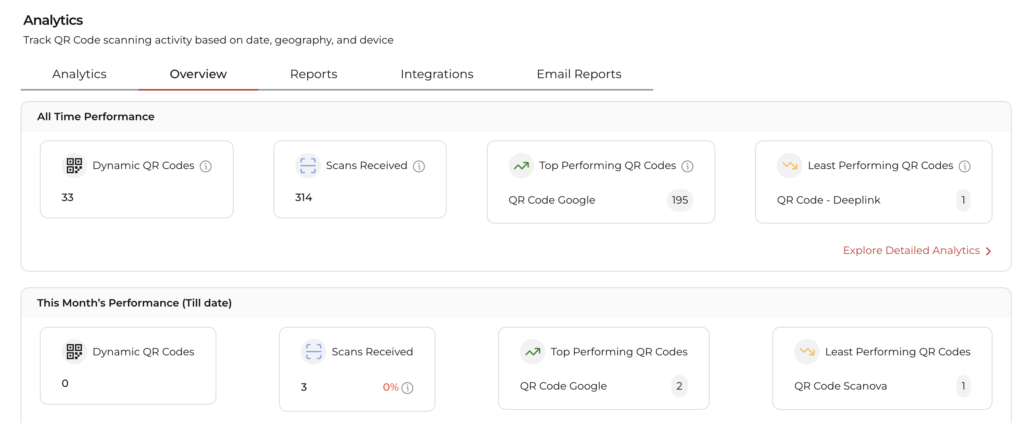
1. Scan location
One of the key metrics collected through QR Code tracking is the scan location. By identifying where users are when they scan the QR Code, you can pinpoint geographic areas with high engagement.
This data helps businesses understand regional differences in interest and tailor their marketing efforts accordingly.
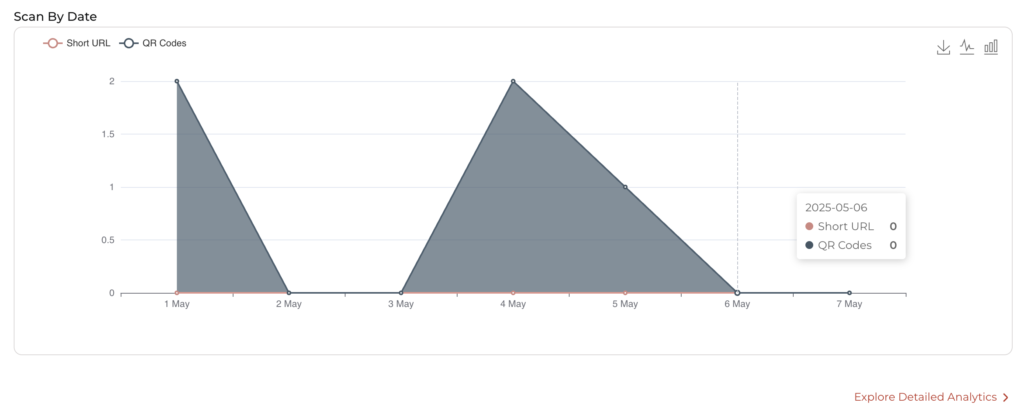
Imagine you run an online bakery and include QR Codes on flyers promoting your new cupcake line. You notice a high number of scans coming from a specific office building.
This might indicate a high concentration of potential customers who work there. Based on this data, you could:
- Target nearby office buildings: Deliver samples or offer special discounts to office workers in that area.
- Run targeted social media ads: Create ads promoting your cupcakes and target them to users in the zip code of the office building with high scan rates.
- Partner with the office building: Approach the building management and explore options like setting up a pop-up bakery or offering bulk discounts for corporate events.
2. Time and date of scans
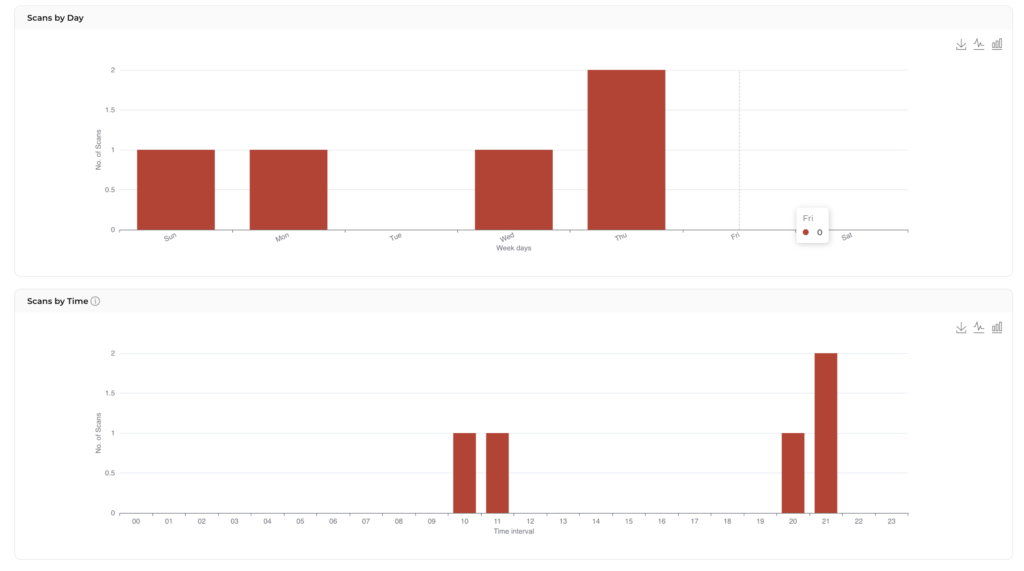
Tracking the time and date of each scan provides insights into when users are most likely to engage with QR Codes.
This information can reveal patterns in user behavior, such as peak times during the day or days of the week when engagement is highest.
Marketers can use this data to schedule campaigns more effectively, launching promotions or content during periods of high activity to maximize impact.
3. Device type and operating system
QR Code tracking also captures information about the operating system and type of device used to scan the code.
This data helps businesses understand the technology preferences of their audience.
When connected to a Customer Data Platform (CDP) featured in Spotsaas, this information becomes even more valuable because it aligns scan activity with broader customer journeys.
For instance, a higher number of scans from smartphones compared to tablets might indicate a preference for mobile engagement.
Knowing the prevalent operating systems (iOS vs. Android) can also guide app development and compatibility decisions. This will, in turn, ensure a seamless user experience across all devices.
Collaborating with a specialized iOS app development company can further optimize your app’s performance on Apple devices, ensuring compatibility and maximizing user engagement based on the insights gained from QR code tracking data.
4. Number of scans

The total number of scans is a fundamental metric in QR Code tracking. It provides a clear measure of overall engagement and interest in the content linked to the QR Code.
Did you know that, according to ProfileTree, by 2023, the number of QR Code scans reached 26.95 million globally?
A high number of scans suggests that the QR Code is effectively capturing the audience’s attention, while a low number may indicate the need for adjustments in the marketing strategy, such as better placement or more compelling calls-to-action.
5. Scans by exact GPS location

Some builders offer pinpoint location data, which can be powerful. Imagine a restaurant chain seeing QR code scans near a university – a potential new market for targeted promotions.
6. Browsers used
Tracking the browser used for scanning reveals how users access the information. A high number of mobile browser scans suggests smartphone engagement.
This can influence website design and optimization for various devices.
7. Tracking user behavior
Tracking features of QR Codes, when used for events, can reveal user actions after a scan. Examples include:
- Link Clicks: See which links users click on the linked webpage, revealing user interests.
- Button Clicks: Analyze button interactions to understand user intent and optimize the user journey.
- Attendee details: When and how often people visited your events, and when was the footfall highest?
- Scroll Depth: Track how far users scroll, helping you tailor content placement for better engagement.
Monitoring the number of scans over time also helps in assessing the long-term effectiveness of a campaign.
Things we learned so far:
- Scan Location: Identifies high-interest areas
- Time and Date: Reveals peak engagement times
- Device Type & OS: Guides mobile optimization strategies
- Number of Scans: Measures overall campaign reach
- GPS Location & Browsers: Provides detailed user behavior insights
E. Benefits of tracking QR Codes
1. Measuring engagement
Tracking QR Codes is a great way for businesses to measure engagement precisely.
By seeing how often a QR Code gets scanned, marketers can tell how well their campaigns are doing.
If a QR Code has a high scan rate, it means people are really interested and interacting with it.
On the other hand, if the scan rate is low, it might be a sign that the QR Code’s content or placement needs a rethink.
This kind of data is super helpful for marketers to figure out which campaigns are hitting the mark and which ones might need some tweaking.
2. Understanding user behavior
QR Code tracking gives businesses valuable insights into user behavior. By looking at data like where and when scans happened, devices used, browsers used, etc., you learn a lot about user preferences and habits.
For instance, if many scans come from a particular area, it could mean there are lots of interested customers there.
Knowing these patterns helps businesses tailor their marketing strategies and content to better match what their audience wants and needs.
3. Optimizing marketing campaigns
With detailed tracking data, marketers can fine-tune their campaigns for better results. QR Code analytics show which marketing materials are the most effective and which channels drive the most engagement.
This information lets you allocate resources efficiently, focusing on strategies that work best.
Plus, real-time tracking means you can quickly adjust ongoing campaigns to keep them relevant and effective.
Overall, QR Code tracking helps marketers refine their tactics and boost their marketing performance.
F. QR Code tracking limitations and smart ways to overcome them

Let’s be honest: QR Code tracking isn’t perfect. On its own, it gives you limited data like scan count, location (via IP), and time.
It doesn’t reveal who scanned it, why they did it, or their demographics. Plus, not everyone has a smartphone or feels comfortable scanning due to privacy concerns.
So, how can you get better insights?
- Use additional tools: You can combine QR Code data with tools like Google Analytics or unique promo codes to capture richer insights.
- Add lead generation forms: Tools like Scanova let you collect names, emails, and more, so you know who scanned and why. You can even export this data in CSV format.
- Target smarter: You can use dynamic QR Codes to customize destinations by region or user type.
- Set clear expectations: Tell users what they’ll get before they scan – this increases relevant interactions.
- Prioritize privacy: Choose a trusted tool (like Scanova) that follows strict data protection practices (see more below).
G. Real-world examples of QR Code tracking in action
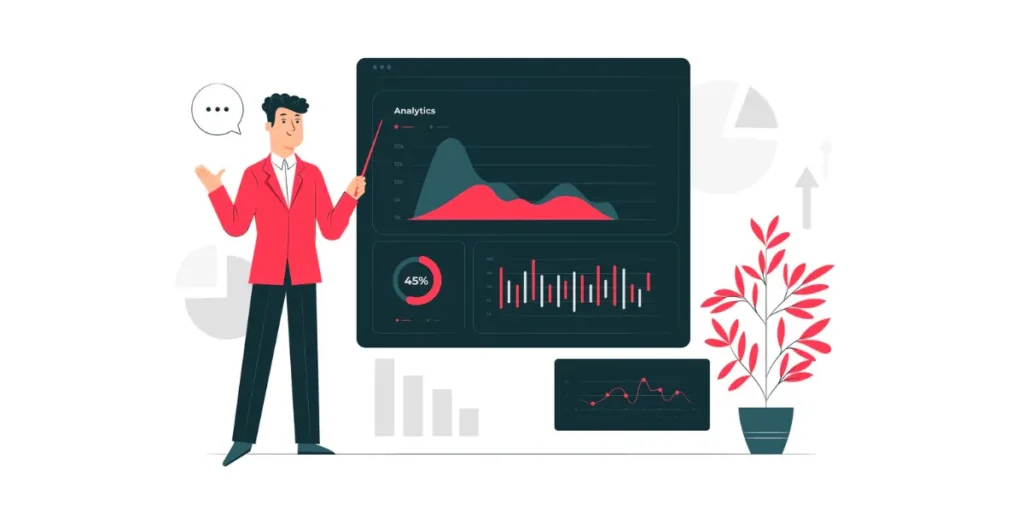
Top brands use QR Code tracking, and the results speak for themselves.
1. Starbucks ran a summer promo with QR Codes on product packaging. By tracking scans, they identified high-performing regions and products, adjusting campaigns accordingly.
2. Sephora used QR Codes in window displays to analyze customer interest in-store layouts and displays.
3. Equifruit, Canada’s top banana importer, added Scanova-powered QR Codes to their packaging. They saw over 7,000 scans on just 33 codes and achieved +37% scan growth YoY.
The codes linked to their website, their reviews, the product info, and social media pages are improving both reach and customer experience.
The best part? Dynamic QR Codes saved Equifruit money by eliminating the need to reprint every time they updated content.
4. Coachella used QR Codes for ticketing. This helped them manage crowds, track entry times, and even collect live attendee feedback – all in real time.
H. QR Code privacy: What you need to know?

Tracking is useful, but it has to be ethical and transparent. Here’s how to do it right:
1. Get consent: Let users know you’re collecting scan data. Add a small disclaimer or a link to your privacy policy.
2. Secure your data: Use platforms like Scanova that offer encrypted data handling, secure servers, and GDPR compliance.
3. Privacy matters: Show people your privacy policy (it’s like the rulebook for your data) and make it easy to find.
Bottom line: Transparency and security build trust and boost scan rates, too. Scanova has many safety and security features, including:
- ISO 27001:2022 certification, by the well-reputed firm BSI
- SOC2 certification
- GDPR compliant
You can know all about it by tapping here!

4. Balance tracking and user privacy: The tool that you will use for creating trackable QR Codes will typically provide a dedicated dashboard for viewing your code’s tracking statistics.
When you choose a QR Code generator like Scanova, which has so many data security compliances, you are showcasing to your users that you are secure and you can be trusted with user data.
This dashboard offers insights into the total number of scans, the number of unique scans (indicating distinct devices), and potentially even granular breakdowns by location and time of the scan.

If your primary focus is cost-effective, simple information dissemination, and offline functionality, static codes would work just fine.
However, for scenarios where data analysis, campaign optimization, and content flexibility are crucial, dynamic QR Codes offer a clear advantage.
It’s important to note that not all online QR Code generators offer tracking features. When selecting a generator, ensure it supports dynamic QR Code creation if you require scan-tracking capabilities.
This will allow you to leverage the valuable data these codes can provide. Scanova QR Code Generator lets you create unlimited dynamic QR Codes, which greatly aid in your marketing and promotional efforts.
Scanova is a perfect QR Code generator for Dynamic QR Codes. The best part of Scanova is its useful options to generate dynamic QR Codes with brand identity, including adding logo, color codes of the brand, etc. Also, they have easy-to-use templates for QR Codes for a quick implementation of any sort of needs in the QR codes such as for business cards, live events, etc.
Muthaian Prakash K, Satisfied Scanova Customer
Also, consider how well each plan supports customers and what extra features they offer. This will help you pick the best option for your needs and budget!
We love that Scanova provides us with demographics/location information when we use their QR Codes in a magazine ad. This allows us to gauge interest in multiple distribution areas. Scanova allows us to access data that we can directly correlate with other analytics we have, to help deliver customers with a more accurate ROl on the service.
Marie Zecca, Satisfied Scanova Customer

I. Future trends in QR Code tracking
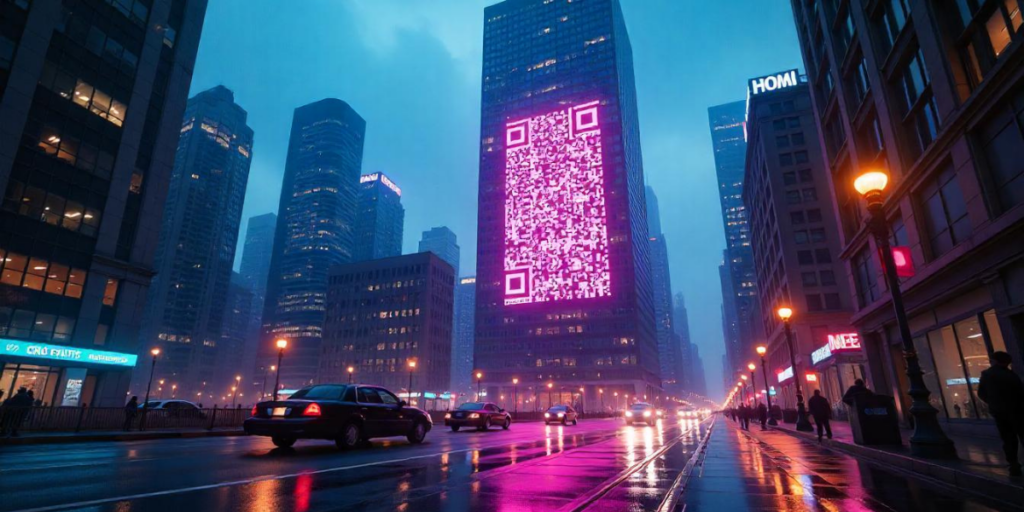
QR Code tracking is only getting smarter. Here’s what’s coming next:
1. Smarter analytics for better insights: QR Code tracking will go beyond just scan counts and locations. Future tools will offer deep insights like how users behave after scanning.
With better dashboards and data visualizations, marketers can spot trends faster and make sharper decisions.
2. AI + Machine Learning = Smarter campaigns: AI and ML will supercharge QR Code tracking.
These technologies can predict user actions, suggest improvements, and personalize content automatically. Think: targeted campaigns that actually work based on real data. Awesome, right?
3. Real-time tracking is the new normal: Soon, marketers will get instant scan data, that too, live. You’ll be able to see what’s working as it happens and tweak your campaigns on the go.
Real-time tracking means faster responses, smarter content updates, and more conversions.
4. Essential for data-driven marketing: As marketing shifts to performance-based strategies, QR Code tracking will be essential.
It gives you precise feedback on what’s working, helping you run smarter, more targeted campaigns while optimizing spend.
In 2022, approximately 89 million smartphone users in the United States scanned a QR code on their mobile devices, up 26 percent compared to 2020. The usage of mobile QR code scanners is projected to experience constant growth, reaching over 100 million users in the U.S. by 2025. Source: Statista
J. Best practices for effective QR Code tracking

To get the most out of QR Codes, follow these simple yet powerful tips:
1. Use dynamic QR Codes: Dynamic QR Codes let you change the content anytime without reprinting. Plus, they support advanced tracking.
2. Optimize for mobile: Most scans happen on smartphones. So make sure your landing pages are mobile-friendly. That means they should be fast-loading, responsive, and easy to navigate.
3. Add clear calls-to-action (CTAs): Tell users exactly what to expect. Use CTAs like “Scan for 20% Off” or “Scan to Learn More.” Clear intent boosts scans and engagement.
4. Track, analyze, improve: Don’t just set it and forget it. Regularly check the scan data to see what’s working. Use these insights to fine-tune your campaigns and improve results.
5. Respect privacy and be transparent: Tell users what data you collect and why. Display a privacy notice near the QR Code and link to your full privacy policy. Building trust leads to more scans and happier users.
Remember: Transparency and user control are paramount. Always prioritize user privacy when using QR code tracking.
The global QR code generator software market size was valued at USD 850 million in 2023 and is projected to reach USD 1,750 million by 2032, growing at a CAGR of 8.5% during the forecast period. Source: Statista


K. FAQs: Can QR Codes be Tracked?
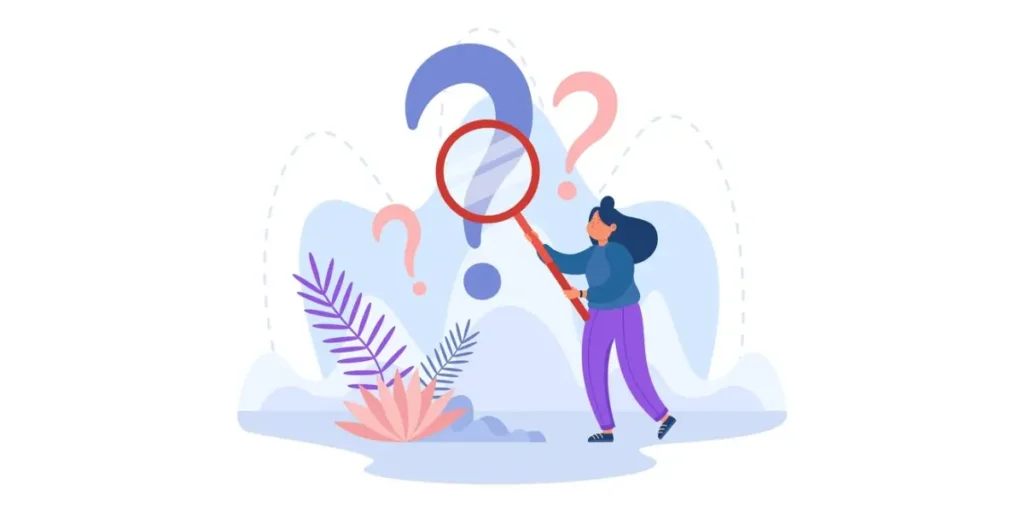
1. Can QR Codes be tracked?
Yes, QR Codes can be tracked. By using dynamic QR Codes and URL shorteners with tracking capabilities, businesses can monitor various metrics such as the number of scans, location, time, date of scans, and the devices used.
2. What information can be collected through QR Code tracking?
QR Code tracking can collect information such as scan location, time and date of scans, the number of scans, and the type of device and operating system used to scan the QR Code.
This data helps businesses understand user behavior and the effectiveness of their marketing campaigns.
3. How does QR Code tracking work?
QR Code tracking works by embedding a unique URL within the QR Code. When the code is scanned, the URL redirects to a server that records the scan’s details before taking the user to the intended destination.
This process captures data about each scan, which can be analyzed later.
4. What are the benefits of tracking QR Codes?
Tracking QR Codes provides several benefits, including measuring engagement, understanding user behavior, optimizing marketing campaigns, and gaining insights into customer preferences.
This information helps businesses make data-driven decisions and improve their marketing strategies.
5. Are there any privacy concerns with QR Code tracking?
Yes, privacy concerns can arise with QR Code tracking. It’s essential to ensure user consent and transparency, clearly informing users about the data being collected and how it will be used.
Adhering to data privacy regulations and implementing strong data security measures is crucial.
6. Can QR Codes track the location of the user?
Yes, QR Codes can track the general location of the user based on the IP address of the device used to scan the code.
This provides an approximate geographic location, helping businesses understand regional engagement.
7. What is the difference between static and dynamic QR Codes?
Static QR Codes contain fixed information that cannot be changed once the code is generated.
Dynamic QR Codes, on the other hand, allow the destination URL to be updated without altering the QR Code itself. Dynamic QR Codes also support tracking and analytics.
8. Do users need special apps to scan QR Codes?
Most modern smartphones have built-in QR Code scanners within their camera apps.
However, there are also many free and paid QR Code reader apps available for download that offer additional features and functionalities.
9. How can I create a trackable QR Code?
To create a trackable QR Code, use a QR Code generator that offers dynamic QR Code creation and analytics features.
These tools typically provide an interface to generate the code and a dashboard to monitor scan data.
10. What should I do if my QR Code tracking data shows low engagement?
If your QR Code tracking data shows low engagement, consider reviewing the code’s placement, the clarity of the call-to-action, and the relevance of the content it links to.
Adjust your marketing strategy based on these insights and test different approaches to improve engagement.
11. Can I update the content linked to a QR Code after it has been printed?
Yes, if you use a dynamic QR Code, you can update the destination URL or content without changing the QR Code itself.
This flexibility allows you to keep your printed materials relevant and up-to-date.
12. Are there any tools available for QR Code tracking?
Yes, there are many tools available for QR Code tracking, including paid and free options. Popular tools include Bitly, Google Analytics, Scanova, QR Code Generator, and QR Stuff.
These tools offer various features for creating, managing, and analyzing QR Codes.
13. How do you track QR Codes?
QR Code tracking involves using a unique URL embedded within the QR Code. When someone scans the code, they are directed through a server that logs details of the scan before reaching the final destination.
This process collects valuable data, such as scan counts and locations, to be analyzed for insights.
Conclusion
QR Code tracking offers numerous benefits for businesses looking to enhance their marketing efforts.
From measuring engagement to understanding user behavior and optimizing campaigns, the data collected through QR Codes is invaluable.
As technology advances, QR Code tracking will become even more sophisticated, with enhanced analytics, AI integration, and real-time insights shaping the future of marketing.
By following best practices, businesses can effectively leverage QR Code tracking to drive engagement, improve customer experiences, and achieve their marketing goals.



Hi Ashish!
If I fill out a survey on a QR code can the person who created the QR code tell who filled out the survey? In other words if it is supposedly an anonymous survey can they identify the use of the smart phone that scanned the QR code?
Hey,
The only way the owner of the QR Code can know exactly who filled out the form (by name) is if you filled your name in the form while filling it out.
Talking about the ‘handset’ used, the QR Code owner can see the model name of the handset if they created a dynamic QR Code. That can help them see the list of mobile handsets (model names) of devices used to scan the QR.
Hope this was helpful.